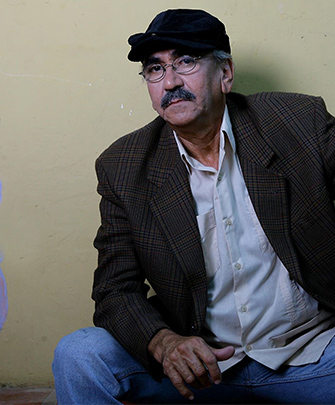Edgar Queipo

"My paintings are inspired by a fundamental and very punctual part of my life and my loves." I describe my art as an expressionist vision with the contributions of the different schools or tendencies that have occurred in these centuries, bringing out my ideas and experiences. My style has come along, changing and enriching the human figure, adapting it to my form of drawing, to my nerve, volume, and color expression. My materials have been diverse; for example, I was in love with Chinese ink on paper for ten years and it was watercolors and transparencies for a while. Later, with pastel chalk on fique [vegetable fiber], jute, coleto and patchwork, I achieved expressive force. I was always scared of oil painting, but with the experience of pastel on fique I became unafraid of oil and acrylic painting. Today I work with fluidity and artistic leaning.
“My process has been slow. I had to learn to read and write and talk after becoming an adult; by necessity of being a painter, of being a critical man before society and to feel good about myself, satisfied with my work. In that process, I have enriched my work as an artist and as a man. I first learned art in the Neptalí Rincón Art School, here in Maracaibo. Later it was with my buddies, with constancy and with perseverance in my studio. My paintings are inspired by a fundamental and very punctual part of my life and my loves. I paint because I feel good and I express what I think about the real world, and my imagination expresses itself.
“The greatest challenge I have faced in life is to be a painter; I have always found support in my family. My favorite things are my wife, my kids, books, music, and my mountain studio. That is a Miton mountain, found in the state of Trujillo, where I work. There I am constructing a castle made from rocks. In the future, I have a few trips planned, as well as continuing work on my castle. I also have exhibitions planned. I have won awards and they have published some things about my work, like the book ‘Artists of Zulia.’”

